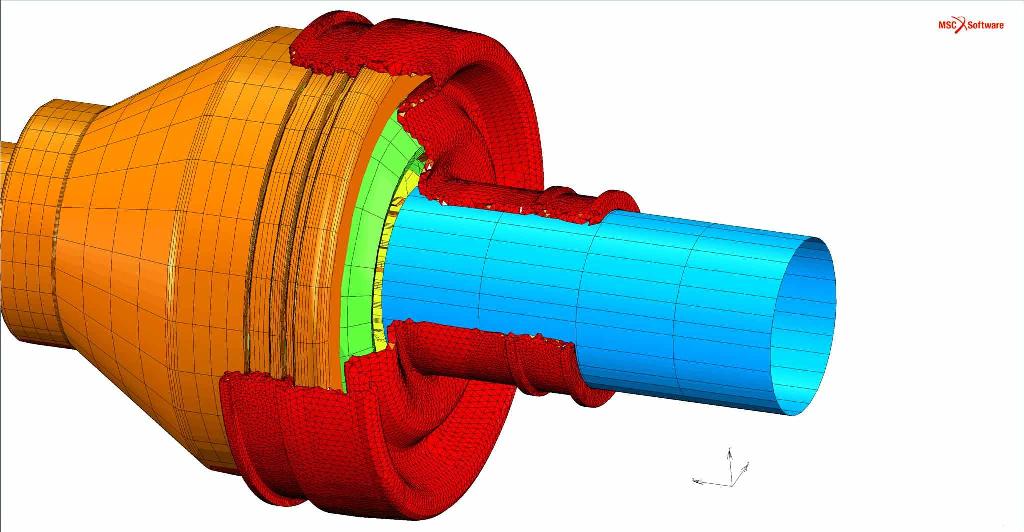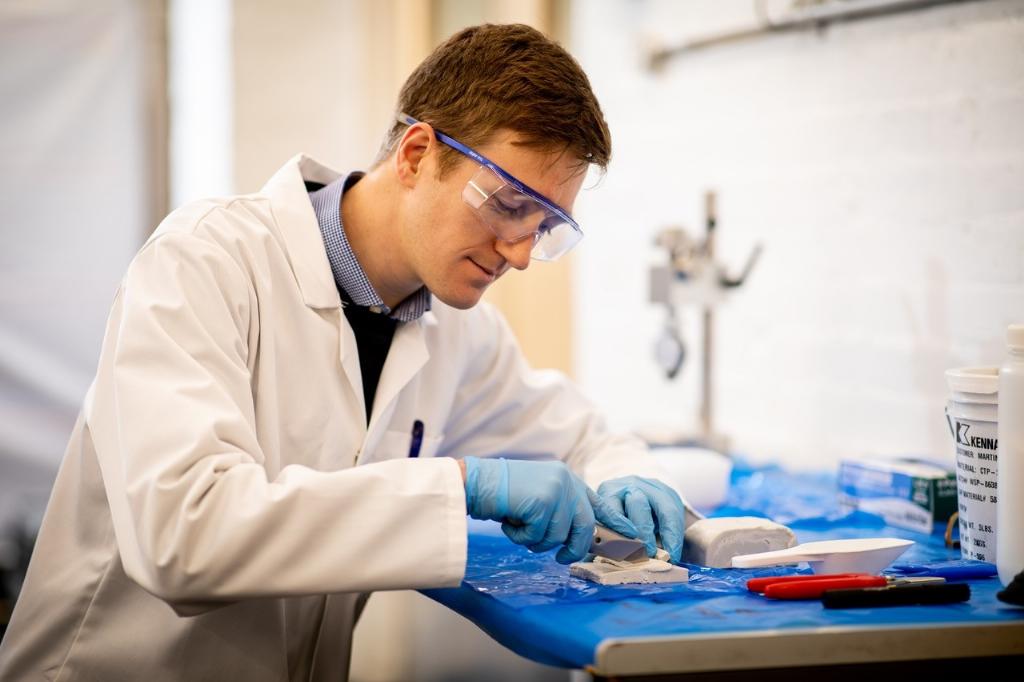Pushing the boundaries

As an SME embracing Industry 4.0, Martin’s Rubber loves to push the boundaries. The question is, are its aerospace customers really ready for that change in their rubber components? Company owner and director, Adam Hooper looks at what might be holding them back.
Martin’s Rubber has been supplying parts into aircraft for decades, and as the industry and technology have grown and developed, so have they. Although the methods for vulcanising rubber components haven’t changed much since the Victorian era, the controls, processes and raw materials are lightyears from that which the then owners of the business would have been familiar with.
Q) What is your vision for your aerospace customers?
If there’s a single common theme that we see with rubber products for aerospace, it’s that they’re one of the last things to be designed and specified within an assembly, and one of the first things to be blamed when something goes wrong. Whether it’s a seal, a bump stop, or the non-slip pad on a drinks tray, the rubber component is usually the final part of the thought process and is often made to ‘fit’ with the other components. This tendency to exclude the rubber component from full consideration leaves a gap in the design process that could eliminate problems from the outset, were enough time and focus given to these seemingly innocuous products.

Our goal is simple: to spread the word about the benefits of allowing the right amount of time and focus, in terms of both design for manufacture as well as design for function. This will ultimately be more cost-effective for the customer in terms of the assembly and is likely to provide a superior overall product.
Q) Is there still a need for rubber on modern day aircraft?
Rubber still provides unique properties that novel, synthetic materials cannot; its elastic nature means that it will provide an airtight seal between two mating surfaces even with imperfect sealing faces. Its ability to chemically bond to metals, plastics and carbon fibre means that a dual-material component can be created which is greater than the sum of its parts. Latterly, the development of advanced materials means that a rubber mix can be created for extremely specialist applications - products which are thermally conductive whilst being electrically insulative; lightweight rubbers which don’t compromise on strength; the addition of carbon and graphene nanoplatelets for improved damping.
Rubber is an exciting, versatile material that can provide huge scope for solving problems and offering alternative engineering solutions – the difficulty for our customers is knowing when to ask the right questions during the design process, and which questions to ask. If we’re able to collaborate with the designers early enough and therefore able to influence the material specification and the design of the part itself, we can really add value.
Q) Where and how are your products used within industry?
The types of products that we manufacture are specific to the customer; each component that we make is bespoke and it is produced from unique tooling. Many of our solutions can be found on the interior of the aircraft, meaning that the finish and colour is equally as important as its function. It also means that the materials we use must be FST compliant.

Additional requirements that arise include things like the material’s ability to be cleaned down with antibacterials without suffering from degradation – and the addition of biocides to a compound aids this process further. Properties such as anti-static can also be a consideration; where silicone is often the go-to choice for an aesthetic part, it attracts dust and quickly looks dirty regardless of any cleaning regime, so we have to be very careful about selecting the right material for the job.
Q) Are you able to answer the call for lightweight materials?
The drive for lightweight materials led to the development of our ‘FRlite’ silicone, a novel rubber using a self-reinforcing lightweight structure to reduce the density. The clever part is that it still maintains the other properties of silicone, including its FST compliance. Sadly however, in spite of the widely documented demand for lightweight components on aircraft, because standard materials are often specified at design stage prior to consultation, some customers have missed the opportunity to take up this material and are then unable to go through the design change process to get it specified onto the aircraft. It has been extremely popular with customers in much faster design cycles, such as motorsport, but the aerospace industry seems less keen to take the leap.
Q) How are you using simulation within the scope of Industry 4.0?
FEA tends to be a given for metal components in today’s engineering world to simulate the likely performance of a part in situ. However, where rubber parts are concerned, non-linear FEA is required because the relationship between the forces and the subsequent displacements of the product are non-linear in nature. This process can cut a huge amount of time and money from the development process, removing prototyping and testing phases and enabling lightweight products to be developed for optimum performance. It also facilitates design for manufacturability to reduce costs – but it requires forethought and planning; often by the time we are involved, parts are already designed, specified and signed off, leaving little room for innovation or improvement. This non-linear FEA technique needs specialist software and an in-depth understanding of rubber materials; most in-house design teams are not set up to do this work, which is why we offer the service ourselves.
Q) What unusual challenges do your customers face?
It may sound obvious, but rubber is not plastic – and, in spite of some of the parallels between the two materials, they have very different properties. One of the biggest challenges faced by aircraft designers in terms of aesthetic continuity between polymers is that rubber doesn’t look like plastic once it is moulded, which can lead to frustrations over the visual finish of a rubber part. Firstly, colour matches can be difficult to achieve and maintain in rubber compounds – there are strict processes in place to ensure consistency but getting it right in the first place can be time-consuming and it is not always simply a case of specifying a pantone reference and expecting the manufactured product to look the same shade as the other materials (usually plastics) using that same colour reference. Similarly, identical surface finishes can look very different on rubber parts to plastic parts, making it critical that a consultative approach is taken so that we can offer guidance from a visual perspective.
Q) Finally, how do you make yourself memorable?
As an SME, we have agility; we are able to move quickly and react to customer demands. Our ability to provide fast-track services and create innovative solutions quickly is one of the things we are renowned for and is at the heart of what we love doing – one of our core values is ‘we dare to do the difficult’. However, we are still restricted by the processes required within the design and manufacture phases; development of material colours, the time taken for the FEA process and any consultation on visual aspects of the design – and, of course, there is always the customer’s own cycle of approval and testing.
Rubber components are usually unseen, but that does not mean that they are unimportant; they can be the difference between sealed or leaking, between unsightly gaps and seamless finishes. From the perspective of the engineers and designers that we work with day-to-day, if they get it right, chances are nobody will thank them because the part becomes invisible, but get it wrong and it will absolutely be remembered. We just want to be able to help make our customers’ rubber products forgettable for all the right reasons.










